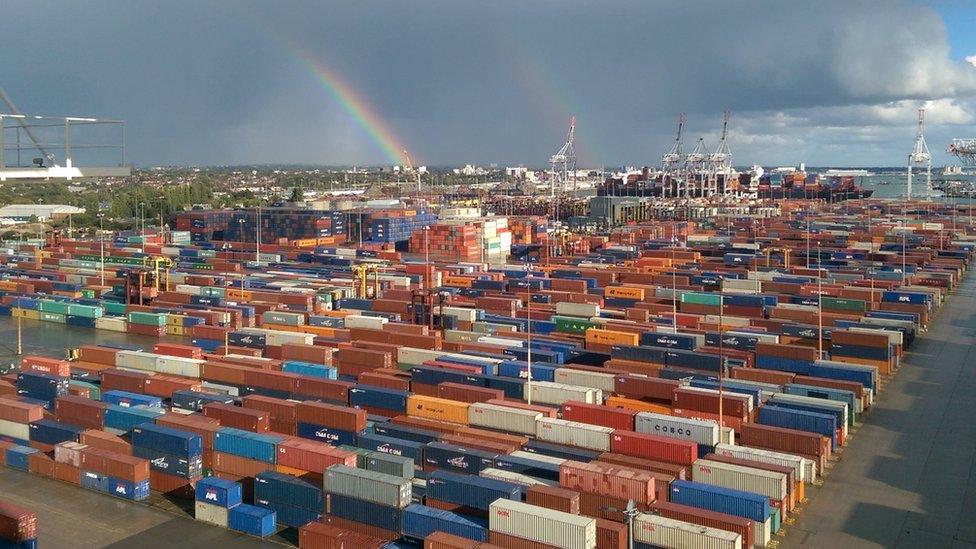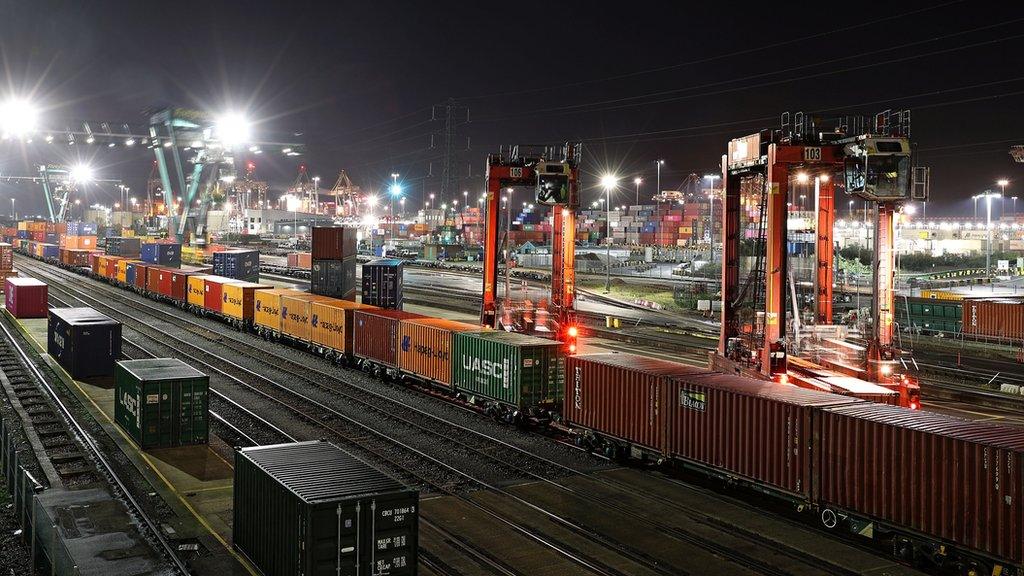Southampton: Port incentives switch freight from road to rail
- Published

More than a third of imported shipping containers leave Southampton docks by rail
A major port has recorded a sharp increase in customers moving imported freight by train rather than by lorry.
DP World Southampton introduced incentives to use rail in September, paying £70 per shipping container and then £100 from January.
The firm said rail's share had risen from 21% of containers in early 2023 to 35% in March 2024.
Director John Trenchard said the switch had avoided 13,500 lorry journeys in six months.

DP World said the scheme was reducing carbon emissions
Mr Trenchard said: "It saved about 4,500 tonnes of carbon dioxide (CO2). That is more than two-and-a-half times more than the total CO2 emitted by port operations at DP World Southampton for the time period."
The incentive is paid for freight travelling to railheads within about 140 miles (225km) of Southampton, including large distribution centres in the Midlands.
The scheme is funded by a £10 levy on all laden containers arriving at Southampton docks. Customers moving freight to railheads further away than 140 miles have the £10 refunded.
The incentive was reduced to £80 from April.

Analysis
By Paul Clifton, BBC South transport correspondent
The ambition is to enable rail to compete better against lorries heading up the congested A34 and M3 to the giant distribution hubs in the Midlands.
Previously those journeys were thought to be too short to be viable by train.
In recent years the proportion of docks traffic going by rail has fallen, with lorries proving a cheaper option for moving global imports inland.
DP World aims to achieve net zero carbon emissions by 2050 - a difficult challenge when almost everything entering or leaving its terminals by land or sea is powered by oil.

Southampton port director Alistair Welch, from Associated British Ports, said: "We are putting the infrastructure in place to support growth in rail.
"We are seeing an uptick. And the total volume now is much higher than we had 10 years ago."
The port also sees a daily Freightliner service to Coatbridge near Glasgow, which uses HVO fuel as far as Crewe and electric power further north.

Follow BBC South on Facebook, external, X, external, or Instagram, external. Send your story ideas to south.newsonline@bbc.co.uk or via WhatsApp on 0808 100 2240, external.
Related topics
- Published7 June 2023
